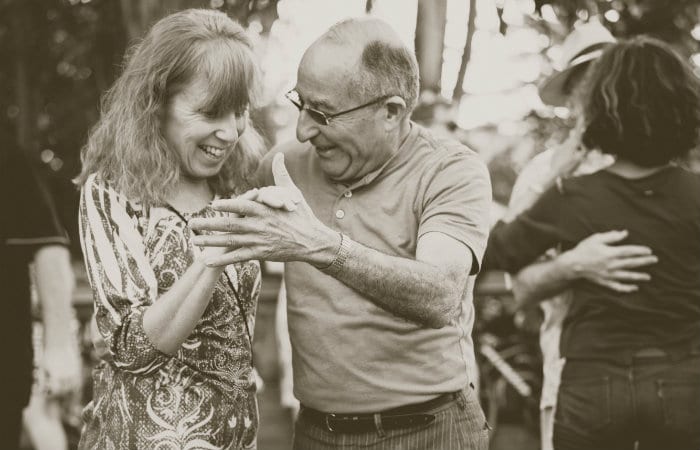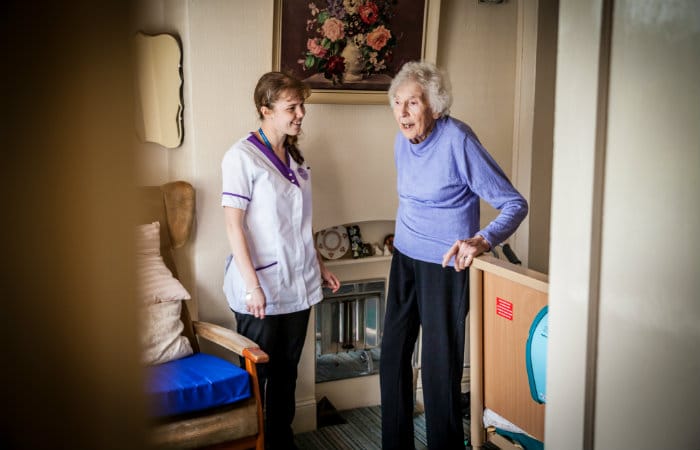As time goes by, it’s inevitable that things change physically and mentally for all of us. Our memories start to become a little hazier, we take a little bit longer to do the things we used to be able to do and our bodies just don’t react the way they used to – especially if you have grandchildren running around! Perhaps the most noticeable change is the difference in our bodies and fitness; if you are living with a condition that affects your mobility, it can sometimes prove difficult to ensure that you’re getting the right amount of exercise to keep you fit and healthy. If you are struggling to complete daily tasks as a result of your health, elderly care may be a good option for you. Ensuring that you do so will not only improve your immediate physical health, but can also help your emotional wellbeing too – not to mention living longer!
According to government guidelines, adults aged 65 years and older should complete moderate aerobic activities once a week and strength exercises on two or more days a week – providing they have no conditions that limit their mobility. But what activities are suitable for the older generation? And are any of them actually enjoyable?
Fun and fitness
Some of us start to feel our bodies change as early as our thirties – a sure sign that we are no longer the spritely twenty-somethings we once were! But as the saying goes – the earlier you start, the better – and this couldn’t be closer to the truth when it comes to fitness and life expectancy.
One of the latest crazes to sweep the nation is dancing, which is thanks – in part – to BBC’s Strictly Come Dancing and other popular dance shows. And with more styles and varieties of dance than ever before, dance classes are popping up at a rate of knots across the country. Whether you want to relive the ballroom dances of your youth with a partner or if you want to try out-trending your grandchildren with some funky fresh street dance moves, there really is something for everyone.

More than ever, we’re hearing of how dance is promoting fitness, wellbeing and all-round fun. The likes of Zumba, a popular fitness dance inspired by Latin moves, is inspiring more and more people to take up dance, regardless of their age or fitness levels. In Columbia, the word ‘zumba’ means to move fast and have fun, and that’s exactly what fitness should be about.
If you’re worried about going somewhere new by yourself, you could see if any of your friends fancy taking up a new hobby with you. Not only will you be getting fit, but the social element of group fitness allows you to catch up with old friends and make new ones.
Not forgetting the cheapest and easiest way to keep fit: walking! Not only does stretching your legs help you to burn calories and get the blood pumping round your body, it allows you to take in the wonderful outdoors and really get in touch with the beauty around us. It can be done alone or in a group and even if it’s just for 10 minutes a day, it all counts. There are plenty of walking groups and apps available for different walking terrains and distances in your local area. Why not explore what’s on your doorstep?
Use it or lose it
It’s no coincidence that exercise improves mental health and wellbeing. It has the power to increase alertness, boost self-esteem and even help to reduce stress and anxiety. So if exercise has the power to do that for our mental health, it makes sense that the same positive correlation should exist for physical health too. But for those that are less active and struggle with physical activity, what are the options?
If you haven’t exercised for a while or you are quite limited with your mobility, a good place to start is chair exercises. Once you’ve selected a sturdy, solid chair with sufficient back support and without wheels, moves such as hip marching, upper body twists and ankle stretches are all great ways to gently build up strength and flexibility. Once you feel confident with these sitting exercises, the next step is using your chair to balance yourself when completing moves whilst standing.
Gentle exercise such as aqua aerobics are great for those living with arthritis. The buoyancy of the water puts less pressure on the joints and also helps to reduce some of the pain associated with arthritis. The resistance of the water acts as a weight against your limbs, but feels much lighter than any weight used out of water; therefore strengthening muscles and increasing bone density in a much more measured and manageable way.

For those living with dementia, research has found that regular physical activity can help to delay the further decline of cognitive function and even reduce the risk of depression by up to 30%. This reduction of cognitive decline also applies to those that haven’t been diagnosed with the condition, giving even more gumption to the notion that physical activity is beneficial for us all. And if you or a loved one are in the latter stages of dementia, simple exercises such as standing up and moving about as regularly as possible will help in maintaining your health and wellbeing for as long as possible.
Exercise clearly has some fantastic health benefits, but with anything related to your health, it’s always best to make sure you’re prepared and discuss any concerns with your GP in the first instance.
Page reviewed by Raj Senniappan, Occupational Therapist on March 15, 2021